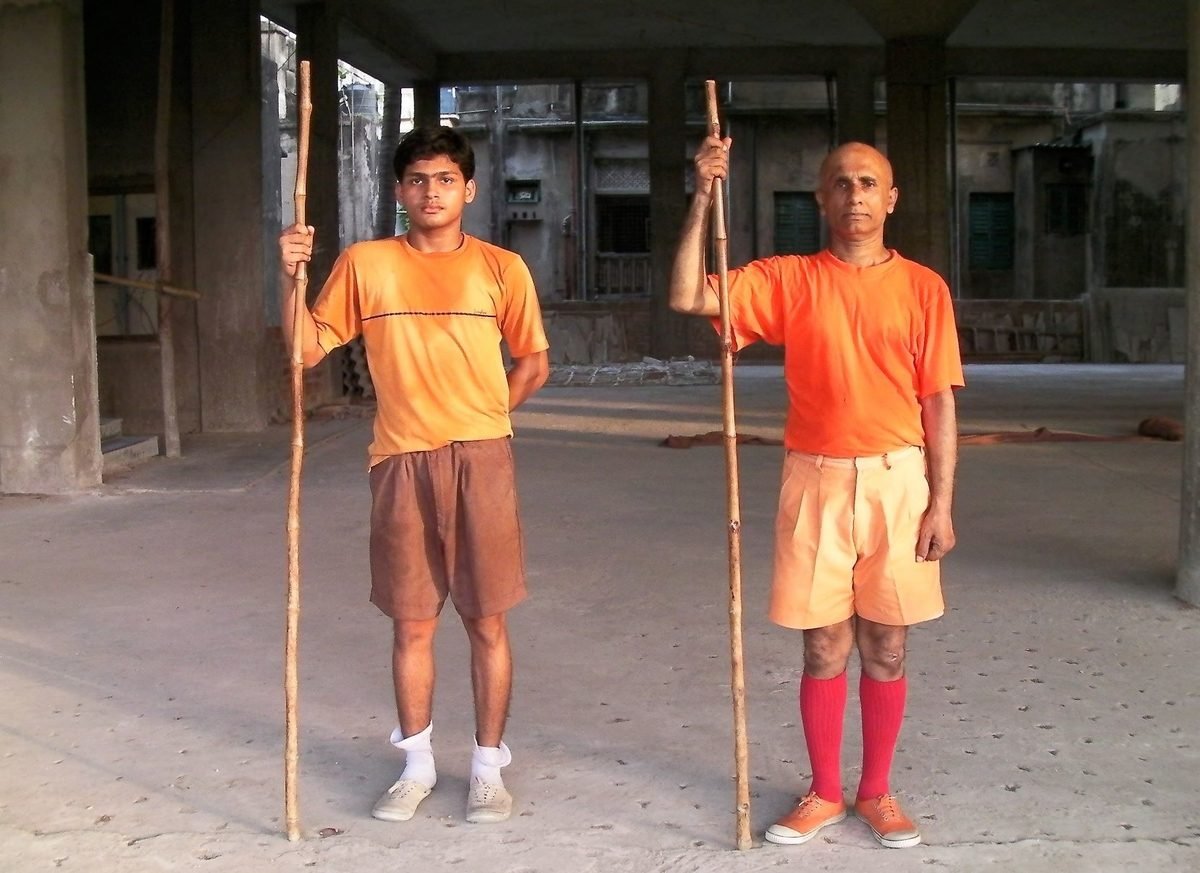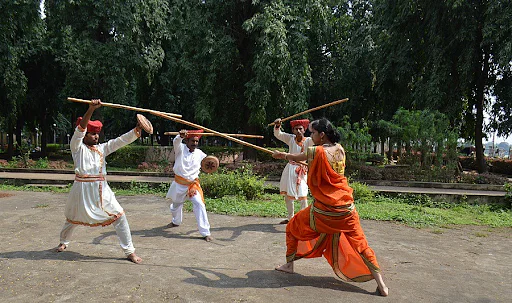Lathi Khela – Self defensive martial art of Bengal

Lathi Khela is the traditional martial art form of Bengal. When we say Bengal, it refers to both, the Indian Bengal and Bangladesh. As the name itself suggests, this martial art form is practiced with lathis or sticks. The one who practices this form is known as a lathia. The history of man’s association with the stick goes way back in time. The stick was first made from the branches of a tree and used by the primitive being to fend away animals or break fruits from trees at a height or rare cattle. This proves that the function of a stick has been that of defence since day one. It can also be seen in movies wherein the Durban holds a lathi in his hand and stands at the entrance of the door to protect his employer. Those who are practitioners were often employed by the aristocracy in order to protect them. They used to roam around behind their bosses with sticks in hand and were used to threaten or beat up anybody who troubled their boss. This does not mean that the lathi essentially had a purpose only to beat up others, it was also a part of the Bratachari system of education.

The lathi is made from bamboo and is ringed with iron. The length of the stick can vary between 2 to 2.5 meters long. The shorter blades are known as Bari and they look like batons. Just like any other martial art, footwork also matters in this form. The coordination between the feet and the hands is of utmost importance. The wrists are trained in such a manner that even if one moves slow or fast while striking or defending, the grip will never be lost on the lathi. The lathi is moved in circles with the grip being in the middle in order to defend. To strike, either the lower end is grabbed with the upper end of the lathi being the part used to hit the opponent. Else, the lathi is held with both hands and the edges are used to strike.
The lathi had a very interesting history during the British Raj. Where it was used by the Indian Zamindars to harass the villagers or the farmers or for their protection, the same lathi was used by the British to keep the locals in check and use force whenever required. Those employed by the British were known as barkanduz. Unlike other lathiyals, these were employed on a permanent basis other than a contractual basis. The best lathiyals were from Faridpur and Bakarganj. Their skills were unparalleled and they were heavy on the pocket so only the wealthy could employ them.

A match of lathi khela, usually consists of instruments such as Juris, Dhols, and karate being played. Either it is a one-on-one match or two teams play against each other. It is fought in an open field and people gather around the lathiyals to get a glimpse of the match. Unfortunately, an art which has a rich history and practising form has lost its popularity. Be it Bangladesh or Bengal, the popularity has decreased immensely. There are several reasons why it has happened. The first is the fast lifestyle that has taken over our to which such traditional games are losing their value and reach. The second is that due to rapid development, the open grounds that were once used to practice this have been lost. There is no place for the matches or practice sessions to be held. The government has also not taken a step towards preserving or reviving this art form.
The current scenario is such that the there are very few practitioners left of this martial art form. Villages and areas which used to be a hub of Lathi Khela, no more have a vibrant practice. The ratio is such that there will be one village where there used to be 20 practicing this martial art. But there is a brighter side to the scenario. People like Indraneel Bandopadhyay are trying their best to not only keep the art alive but also revive it. She talks about the influence of the West as well as the modernisation which has led to children losing interest in such activities. She further says that it is unfortunate that the Indian youth are leaving behind traditional martial arts and adopting other ways such as judo, karate, myu-thai etc.

The Lathi Khela practitioner is on a journey to teach the youth of Bengal about their prestigious past and how they should strive towards learning what is and should be their legacy. The fruits of the efforts put in by Indraneel have already started to reap their benefits as there are a lot of youth that are wanting to and have started learning. She says now their aim alongside promotion of the martial art is to train and organise regular shows. She suggests that one of the ways to bring back this martial art form can be to introduce it in schools. This way the children will get introduced to the martial art at a young age which will help them start out early and become skilled practitioners by the end of their schooling.

There are many events of Lathi Khela organised during the Durga Pooja and a similar game known as Chadi during Eid. The Lathi Khela matches are organised once a year during the Beerashtami festival which is organised at Baghbazar in Bengal on Ashtami mornings. This attracts a ton of people from both, within the country and from abroad as well.
Apart from the physical fitness benefits that one gains from practicing this martial art form there are other benefits as well. One of them is self defence and the other is the safety of the society. If the youth today, learns this martial art, it would help in decreasing crime. How? By granting them with the ability to not only defend themselves but also protect others around them. If individuals like Indraneel Bandopadhyay keep on working on the path of reviving this martial arts, that day is nit far when we will be able to witness matches being fought on the local grounds of this country once again.


